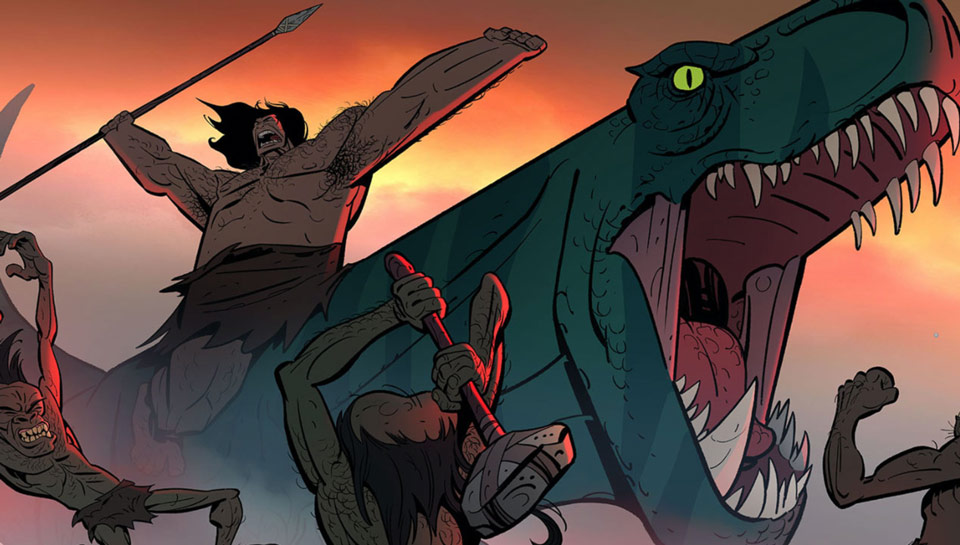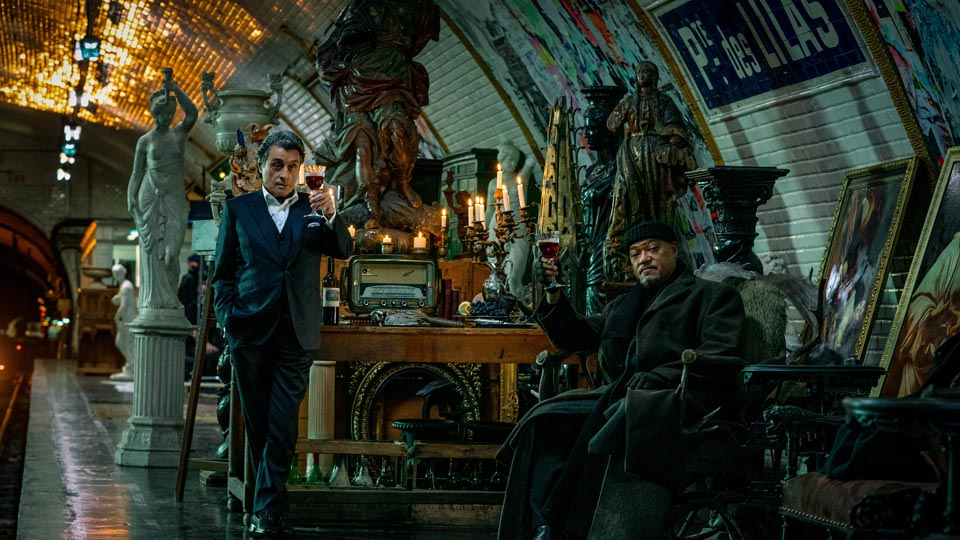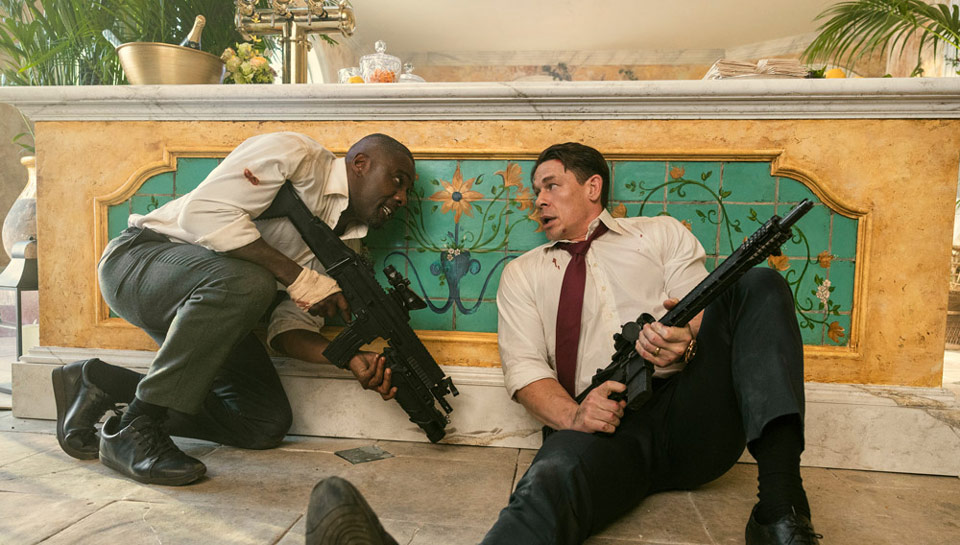In the latest work by American-Russian director Genndy Tartakovsky, a neanderthal and a tyrannosaurus fight for survival in Primal, a bloody prehistoric fantasy series broadcast on Adult Swim. In a steampunk world, two sisters battle each other with the help of magic and technology in the Netflix series Arcane, which is adapted from the video game League of Legends. In the 1970s, a 12-year-old future villain wants to conquer the world with the help of his little yellow assistants in the blockbuster Minions: The Rise of Gru, from the Franco-American studio Illumination Mac Guff, and released in theatres on 6th July. In contemporary Europe, Amin, a gay Afghan man, is trying to find a place to live in peace in the animated documentary Flee, which won awards at Sundance and Annecy in 2021. What do all these animation projects have in common? They were made - in whole or in part - by French studios.
Their importance in the global animation landscape is due as much to their technical know-how as to their structural assets, as major sector players: Charlotte de La Gournerie, co-founder of the Franco-Danish studio Sun Creature (Flee), and the producers of the studio La Cachette (Primal), Erika Forzy and Gabrielle d'Andrimont explain:
Which projects attract internationals?
Since 2015, the number of animated foreign film projects made in France that have benefited from the TRIP (Tax Rebate for International Production) has more than doubled (from 8 in 2015 to 18 in 2021). This special scheme offered by the CNC is a major asset for foreign productions and can amount to 30% of the total budget, with a 30 million euro cap. In 2021, more than 260 million euros in spending pledges were recorded.
The Netflix series Arcane is a symbol of this success and has become a true phenomenon in its own right - produced by the studio Fortiche Production in Paris and Montpellier. In addition to this success, two episodes of the Marvel animated series What if...? (Disney+) have also been produced in France.
American orders now represent the majority of green-lit projects. In addition to the series Primal, the studio La Cachette has also produced an episode of Netflix science fiction anthology series Love, Death & Robots, by American director Tim Miller. Looking back on this adventure, Gabrielle d'Andrimont explains: "The director and one of La Cachette's founding partners, Ulysse Malassagne, put a selection of small teasers online which then went viral, and Genndy Tartakovsky and Tim Miller who are very switched on and watch everything, came across them and contacted us. When we initially met in Annecy it was very informal, but as the Primal and Love, Death & Robots projects moved forward, our relationship became more official. For Love, Death & Robots we were recommended by Owen Sullivan, who directed the episode 'An Old Demon', while we took charge of the animation. On Primal, the relationship with Genndy Tartakovsky (Samurai Jack, Star Wars: Clone Wars, Hotel Transylvania) was much more direct. As Erika Forzy explains: "Genndy gets his hands dirty, which is quite rare for this kind of project. Usually directors are also executive producers - they make pages and pages of notes, hold Zoom meetings...With Genndy we have a close and very collaborative relationship, and all the projects are very different. We do everything from directing to delivery, even the music! The studio Sun Creature is preparing a series adapted from the video game Splinter Cell for Netflix, and has already created kinematics for Legends of Runeterra - a game derived from League of Legends: "With a franchise of this calibre, you don't have to look far for money: Riot Games are financing Legends of Runeterra, and Netflix are funding Splinter Cell...These are very big budgets. We were able to work with Japanese animators on Legends of Runeterra, even though it is usually very difficult to get access to them.
How attractive are French studios?
Gabrielle d'Andrimont sums it up: "La Cachette has a very particular style: a mixture of Japanese and Disney animation which merges East and West,". It's a kind of "Gobelins” style, so-called after the renowned Parisian animation school of the same name. The RECA website, a network of French animation film schools lists no fewer than 72 animation film studios in France and 30 schools training in the sector. This dense network allows for a real variety of talents to emerge, mainly attached to "traditional" two-dimensional animation. A technique that is highly sought after by the Americans, according to Charlotte de La Gournerie: "In the United States, there is no more 2D! If you want to do Disney the old way, the talent is no longer there. In 2016, Coca-Cola commissioned us to do a 2D commercial for the Super Bowl but shot in Denmark! We also did some Miyazaki-style spots for the State of Oregon, again in Denmark, but with French artists. The soda lobby decided not to show our ad because it was just after Trump's election and they were afraid of ruffling some feathers...In the end, the ad was aired in 2018."
"2D animation had disappeared a bit, but it has come back with a vengeance in recent years. Only in France do we have studios capable of producing traditional, quality animation for young audiences...", says Gabrielle d'Andrimont. The producer also highlights a desire among foreign audiences for adult animation, which is a proving more difficult to set up in France. "Our international clients have a real taste for adult animation and they are not afraid to get stuck in. In France there is a real desire to do the same, but it is harder to get beyond the trial phase with broadcasters. As a result it is more difficult to make projects with greater graphic and narrative ambition. The opposite is the case internationally, allowing for a variety of stories to be told.
Why stay in France?
Sun Creature studio used to be based exclusively in Denmark, but in January 2021 opened up a branch in Bordeaux. "We set up Sun Creature France in order to access the tax rebate, as Denmark is one of the few countries that does not have one," explains Charlotte de la Gournerie. "In Bordeaux we produced a series of forty, eleven-minute episodes: The Heroic Quest of the Valiant Prince Ivandoe, for Cartoon Network and HBO Max. This was Cartoon Network's first project outside of London and they wanted a studio that could access this type of crucial funding.
For La Cachette, being based in Paris is mainly to do with image: "Our studio is located in the 14th arrondissement. We discovered during the pandemic that many people like to work remotely, but we enjoy a good atmosphere here. The premises are beautiful, the employees are young, you get to learn more and there is lots of interaction...", explains Erika Forzy. “I'm not sure that being located in Paris changes anything though," says Gabrielle d'Andrimont. There are animation centres all over France now: for example in Nouvelle Aquitaine, or near Valence. Whilst there are big animation companies in Paris, they are creating branches in other regions - in particular to attract regional funds, which in turn contributes to the vitality of the animation sector throughout the country. Even so, in Paris we are able to capture young talents fresh from school who want to grow and evolve with us. Being in Paris is also useful for foreign investors who happen to be in town, as they can come and visit the studio. It makes sense, but on the whole all you need is a computer in order to work as animation can be done from anywhere. That said, being together allows for a better synergy.
What talent for the future?
According to Erika Forzy, "there is a strong need for content. Lots of projects are being set up and a lot of beginners are arriving on the market, while veterans of the animation sector are still on the scene. It is true that there is a "gap" between the two generations, and I would say that there is a lack of senior players and mentorship. In any case, we are lucky in France because it's even harder abroad". While there is no risk of a drop in demand, the situation is becoming more problematic in terms of supply. Charlotte de La Gournerie analyses the talent crisis as being “very difficult to recruit French talent because of, or thanks to, the inflation of budgets. The platforms have increasingly large budgets and therefore pay a lot more than TV channels. There exists a real inflation of artists' salaries, and it is problematic - not only in France but in the UK too, where Netflix has caused a big increase in salaries.
According to the co-founder of Sun Creature, the quality of French animation is inseparable from its European dimension: "The meeting of cultures is very interesting, as young European talents want to work together; for example, on discovering the folklore of Eastern European countries and offering a diversity in narrative and technical approaches.
We will also have to tell the story of what is happening in Ukraine with Ukrainian talent. In order to offer something to the platforms, we need to be structured and we need to have weight. France can make that possible.





